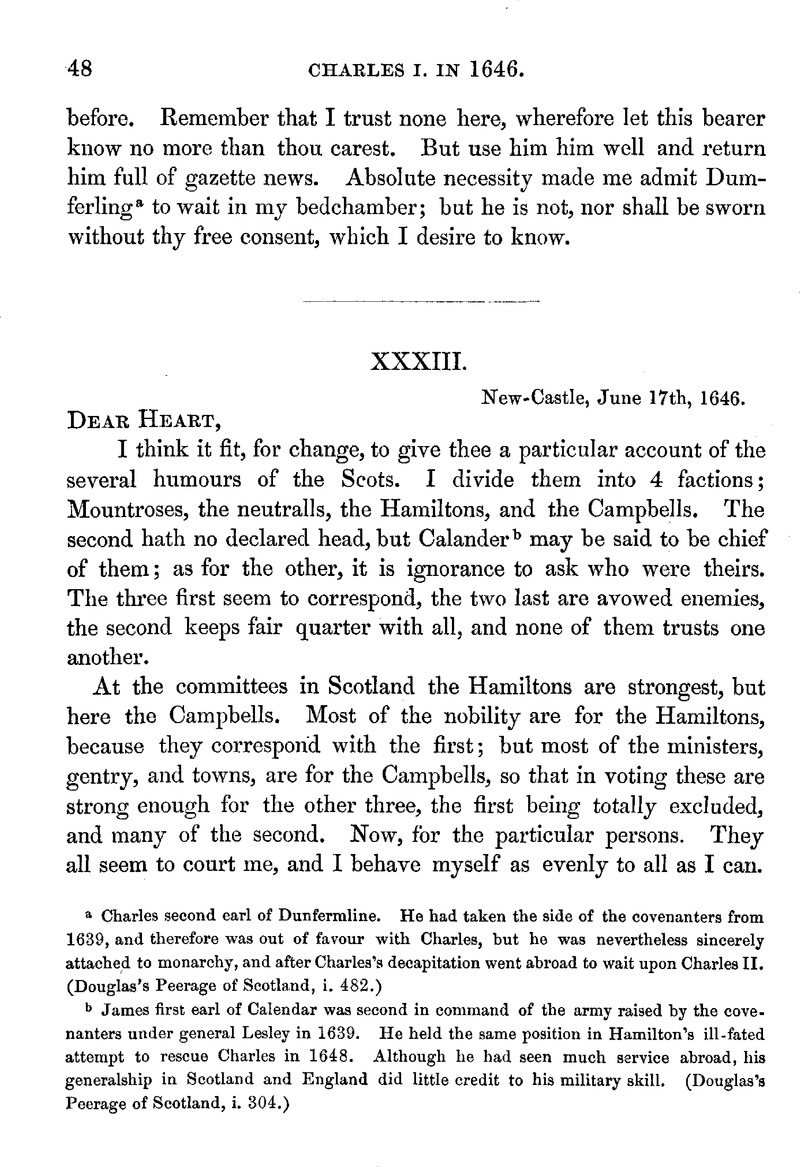Published online by Cambridge University Press: 23 February 2010

page 48 note a Charles second earl of Dunfermline. He had taken the side of the covenanters from 1639, and therefore was out of favour with Charles, but he was nevertheless sincerely attached to monarchy, and after Charles's decapitation went abroad to wait upon Charles II. (Douglas's Peerage of Scotland, i. 482.)
page 48 note b James first earl of Calendar was second in command of the army raised by the covenanters under general Lesley in 1639. He held the same position in Hamilton's ill-fated attempt to rescue Charles in 1648. Although he had seen much service abroad, his generalship in Scotland and England did little credit to his military skill. (Douglas's Peerage of Scotland, i. 304.)
page 49 note a John first Earl of Loudoun.
page 49 note b Lord William Hamilton, brother of the marquess Hamilton, appointed secretary for Scotland and created earl of Lanerick in February 1640–1.
page 49 note c John tenth lord Lindsay of the Byres and earl of Crawford-Lindsay. He was sent from Scotland to the king, with Hamilton and Cassilis, to entreat his majesty to agree to the propositions of the English parliament.
page 49 note d William third earl of Lothian, a zealous covenanter, but no less zealous protester against the trial and execution of the king. He and the earl of Cassilis were the bearers of the invitation of the Scottish parliament to Charles II. to come to Scotland in 1649.
page 49 note e John second lord Balmerinoch, a principal leader amongst the covenanters. As the adviser of the letter to Louis XIII. he was of course unpopular with Charles. He followed Argyll in his opposition to Hamilton's rising, known as “The engagement.”